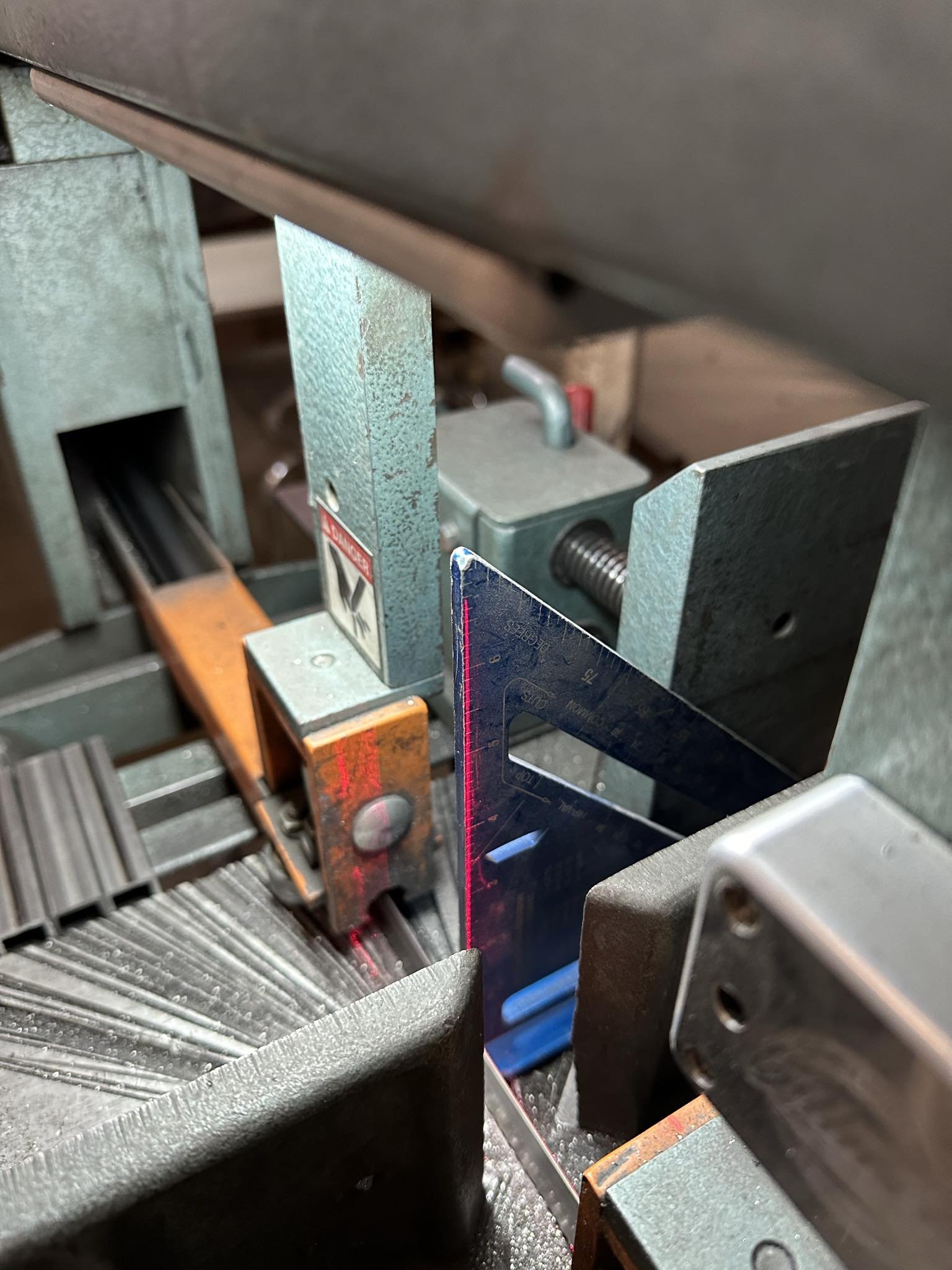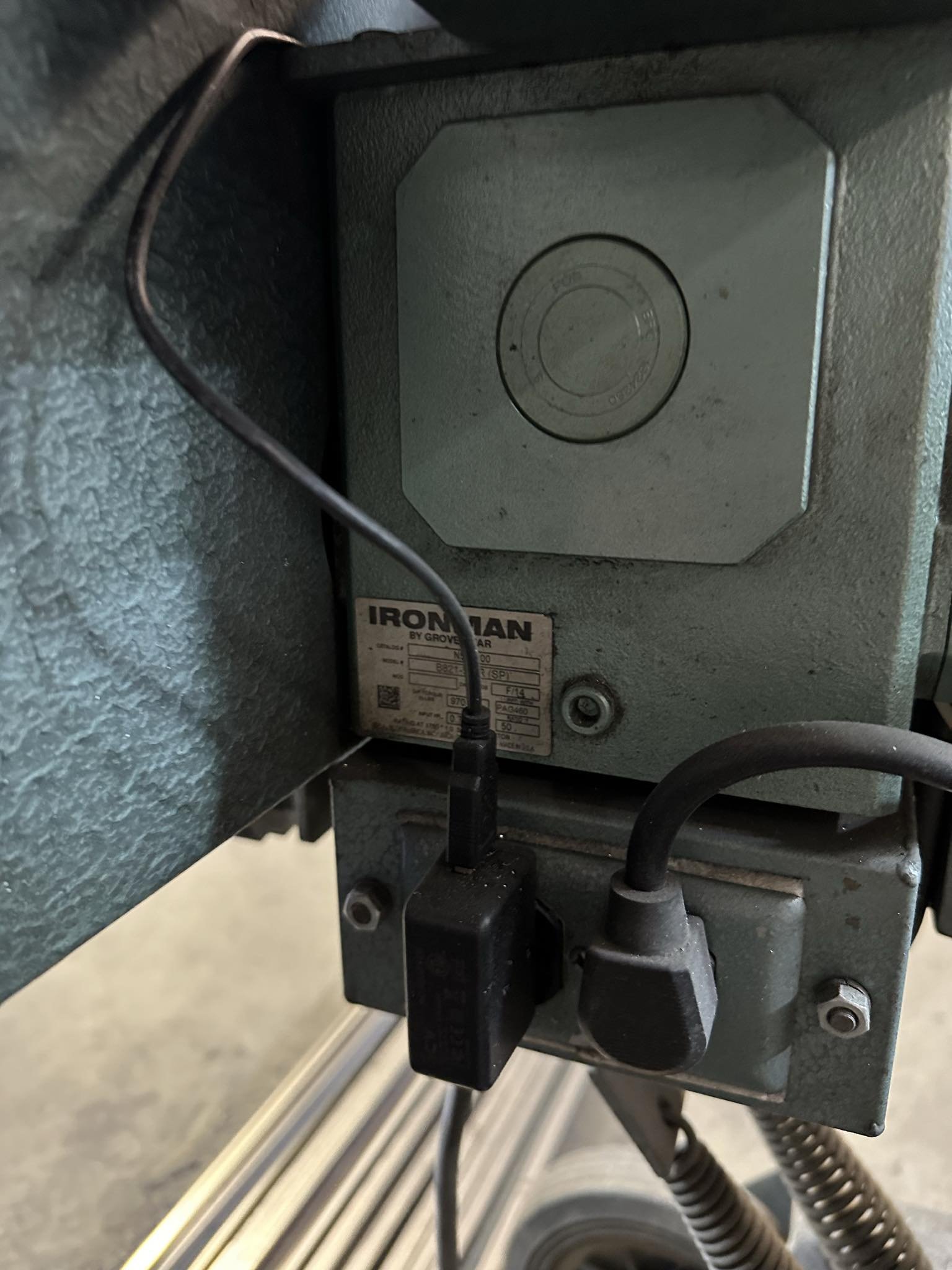SpeedValve 3
Warranty disclaimer:
You have been provided with new oil lines in your kit. You MUST drain your cylinder completely and replace with all new fluid and replace the old lines with the new ones. Not doing so will result in any and all warranties being voided. I’m not kidding, replace that shit, it comes in the kit. Don’t be a lazy idiot. If I see that you’re using your old oil lines that means to me that you have not taken the time to drain your cylinder and properly install the SpeedValve and I will not help you. I will not warranty any of the components. Under no circumstances should you try to force the bow down or take the SpeedValve apart before speaking to me. If you don’t get an immediate response from me and you need the saw operational immediately then put your old valve back on until you have the time to do it right.
1. Set your bow all the way down. Remove existing Parker needle valve from your cylinder, you can do this by completely loosening the nuts holding the plastic tube. Before attempting to remove the tube use a wrench to turn the needle valve loose and out of the way. Once you’ve done this you can remove the tube then proceed to removing the needle valve and remaining fittings. You will lose most of your fluid so please be sure to have a drain pan ready otherwise most of it will drain into your catch pan. Install two of the provided 90° swivel push to connect fittings into the cylinder. It is crucial that you do not over tighten these fittings. The cylinder wall is thin and there’s not much thread in there. Use discretion!
2. Clamp your new SpeedValve body to the .75”x2” solid bar welded into the top of your bow. Exactly where is entirely up to you. However, I like at the front of this bar. Using a 1/4” transfer punch, mark your mounting hole locations into the .75”x2” bar. Remove your clamp and valve. Use a 13/64 drill bit and drill all the way through, be sure not to hit your wheel and blade on the other side. Now tap the holes for 1/4-20 threads. (Some of you will receive a Speedvalve that is machined for #12-24 bolts, You will need to use a different size transfer punch and drill using an 11/64 twist drill and tap for #12-24 threads.)
3. Mount your SpeedValve using the provided 1/4-20x1-7/8 (gen 2 SpeedValve 1/4-20x1-1/2”) socket head bolts. Tighten until snug.
4. Install the provided 1/8 NPT plug into the center rear hole. Install the snubber into the top rear hole and install one of the provided straight push to connect fitting into the snubber. Then install the last provided straight push to connect fitting into the bottom rear hole. Install all of these using a thread sealant. I prefer LOCTITE 545 but Teflon tape will work as well.
5. Route the provided oil lines through the cable chase covering your OEM power cord (this may require notching the end tab and/or trimming the length down depending on saw model). Connect the bottom fitting of your cylinder to the straight push connect fitting at the back of the Speed Valve. Trim to fit. Now connect the top fitting in your cylinder to the 90° fitting at the bottom of the Speed Valve below the toggle. Trim to fit.
6. Remove the fill plug from your cylinder with the bow all the way down, ensure your needle valve and toggle valve are in the open position. Fill the cylinder with 10w hydraulic fluid until full, replace the plug and tighten. Lift the bow and set it down several times to cycle the fluid, ensuring that you’ve also depressed the momentary valve several times during cycling. Set the bow down again, remove the plug and fill until full again. Replace the plug and tighten until sealed. Do this until you can no longer see air in the lines. Check for any leaks in all fittings and tighten as necessary.
7. Ensure the bow weight is set at approximately 8lbs, this is recommended by Ellis on all their models.
You are now finished with installing the SpeedValve 3. Enjoy and remember to share that shit on Instagram, Facebook, YouTube, Tiktok or anywhere else you can think of. Hell, write that shit on a bathroom stall somewhere. Just get the word out!
Important notice; You must drain your entire hydraulic cylinder and replace the oil lines with the oil lines that have been provided to you in the kit. Not doing so will void any and all warranties. I’m not kidding. Don’t be a lazy shit, the lines are included just replace them.
Rapid traverse
1. Fully open both the needle valve and the toggle valve lowering the bow all the way down to relieve pressure in the hydraulic system.
2. Remove the rear push lock fitting and replace it with the supplied 1/8 NPT nipple using thread sealant.
3. Remove the rear mounting bolt from your SpeedValve and loosen the front mounting bolt. Tilt the SpeedValve upwards and tighten the front mounting bolt, leaving the SpeedValve tilted up and secure.
4. With thread sealant, thread the RapidFeed body onto the 1/8 npt nipple until it is tight and inline with the SpeedValve leaving the unthreaded port pointing up.
5. Loosen the SpeedValve front mounting bolt and replacing the rear mounting bolt and snug both. Using a transfer punch mark the RapidFeed body mounting bolt and move the assembly up and out of the way again.
6. Drill and tap new mounting hole for 1/4-20 threads. Using the supplied socket head cap screw replace all three bolts and tighten (For Gen 1 SpeedValve, use the supplied spacer over the bolt behind the Rapid body as your SpeedValve is wider than the RapidFeed valve body).
7. Install the push lock fitting you removed from step 2 into the rear npt port on the RapidFeed valve body using thread sealant.
8. Use general purpose grease on the o-rings of the supplied momentary valve and gently press it into the the top port and install supplied brass tip set screw until snug. If you feel any resistance ont he momentary valve loosen the set screw until resistance goes away.
9. Place the supplied T fitting up to the bottom port of the RapidFeed and eye ball where the lower oil line needs to be trimmed. Cut the oil line and push into the T fitting. Install T fitting into the Rapid lower port.
10. Install oil lines from your cylinder into the push lock fittings (for Gen 1 SpeedValve only, reverse your oil lines so the the bottom line from the cylinder is going into the rear RapidFeed port intot he momentary valve)
11. Make sure all fittings are snug and sealed. Bleed your system by cycling the bow up and down a few times then filling your cylinder. Make sure to depress the momentary valve several times as the bow falls to ensure you’ve relieved the air stuck in it. Repeat until bow stays up in its normal position and until you can no longer see any air bubbles passing through the oil lines. Occasionally, some air may get trapped in the cylinder. I deal with this by lowering the bow and opening your needle and toggle valves, remove the fill plug on the cylinder and fill and let it sit for 5-10 minutes for air to escape from under the piston in the cylinder. Replace plug and cycle bow.
12. The last step will be reducing the spring tension on the back of your saw to 12-15lbs at the head of the bow. Per your discretion.
Line laser
Coming Soon
Unbox all items and test to ensure the laser light is still working after shipping. By depressing the button on top of the 3D printed electrical enclosure you should see the laser line turn on at this point. If it is not working plug in the supplied wall charger and charge the internal battery. If after 10-15 minutes of charging there is still no light please reach out via email or text before attempting to fix it yourself. You will void the warranty otherwise.
3. Mount the laser module housing (billet aluminum piece) to the drop bar using the shoulder bolt supplied with the kit through the existing 5/16 hole, you may have to ream that hole depending on powder coat. Snug that bolt with the laser module housing square with the drop bar.
Step 3
Step 3
2. Mount the electrical enclosure on the spine of the bow and wrap the laser module housing down around the left side of the saw behind the drop bar.
Step 2
4. Using a speed square or machinist square up against your blade turn on the laser by depressing the button on the electrical enclosure and twisting the laser module so that it is exactly 90 degrees from your blade.
Step 4 continued; After the laser light is 90 degrees from your blade insert the 1/4 long 1/4-20 set screw and snug the laser module into place. DO NOT OVER TIGHTEN SET SCREW IT WILL CRUSH THE LASER MODULE.
5. Ensure your saw miter is at 0 degrees and cut a pieces of material. I find P&O tube at least 2” tall is best.
6. Barely let loose the mounting bolt through the drop arm and insert the remaining set screws into the four parameter 14-20 holes. Now using those set screws you can finitely adjust the laser line to line up with the piece of material you had just cut in the previous step. This can be a bit tedious and may require several test cuts to ensure it is accurate but you will get there I promise. Once you are satisfied with the position of the housing tighten the mounting bolt and you are good to go.
7. Route the charging cord down along between the bow and the motor over the gear box down to the spare 120v outlet and plug that into the wall charger supplied with the kit. That outlet is only live while the saw is running so to ensure you don’t cut your fingers off while trying to line something up with your laser line the electrical enclosure houses a battery which is the main power source for your laser. The charger will keep the battery charged every time you run the saw.


















